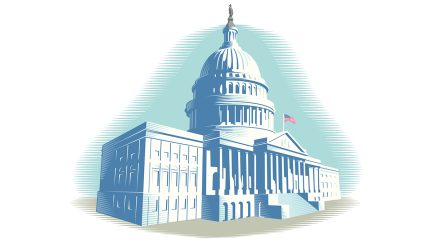Want the latest retirement plan adviser news and insights? Sign up for PLANADVISER newsletters.
Industry Asks IRS to Limit Automatic Features in Merged Plans
Specifically, commenters request that single-employer plans not required to have automatic features, should retain that status when joining a MEP or PEP.
The Internal Revenue Service’s comment period for an interpretative notice related to several provisions of the SECURE 2.0 Act of 2022 resulted in responses that included requests for further clarification ahead of Tuesday’s deadline.
The “grab bag” notice, issued in FAQ format, sought to clarify various provisions including: automatic features, de minimis incentives, tax credits, Roth matching contributions, and distributions to the terminally ill.
Automatic Provisions
SECURE 2.0 requires plans created on or after December 29, 2022, to automatically enroll participants at a contribution rate of 3% to 10% starting in 2025. Plans started prior to December 29, 2022, are not subject to this requirement and are “grandfathered” in.
The IRS notice explained that a single-employer plan that is grandfathered under this provision and later joins a multi-employer plan or pooled employer plan that is not granfathered, loses its grandfathered status.
The American Benefits Council argued in its letter that this contradicts the statute and reduces the access that single-employer plans have to MEPs and PEPs. This interpretation could disincentivize single-employer plans from joining MEPs that are otherwise in the interest of their participants, especially if plan sponsors are worried about the increased cost of matching contributions that could result, the ABC wrote.
ABC recommends instead that the IRS should allow the single-employer plan to keep its pre-enactment status within the MEP or PEP. The ERISA Industry Committee made the same request in its letter to the IRS.
ERIC pointed out to the IRS that employers who will be subject to automatic features in 2025 already have participants in their plans. ERIC asked the IRS to clarify that participants already in a plan at a rate below what is described in the law need not be automatically enrolled in a plan in which they are already enrolled. In the event the IRS decides previously enrolled participants must be automatically enrolled at contribution levels of between 3% and 10%, ERIC asked for guidance on the legal status of their previous contribution level and if a participant’s enrollment a rate outside the law’s range can be considered opting out.
De Minimis
SECURE 2.0 permits the use of de minimis incentives to encourage workers to join a plan sponsored by their employer. The IRS notice states that these incentives can only be used to encourage joining a plan and continued participation, and the total incentive cannot exceed $250.
On this issue, ERIC asked the IRS to clarify the value of a speculative award, such as a raffle. Does $250 refer to the maximum award that can be granted, or does it refer to the expected value? A $500 raffle that someone only has a 1% chance of winning actually has an expected value of $5, not $500.
The IRS explained in its notice that any incentive under this section of SECURE 2.0 is considered to be taxable income. ERIC asked if a sponsor can “gross up” the award such that it is $250 in post-tax income, and therefore over $250 in total.
Terminally Ill Distributions
SECURE 2.0 permits terminally ill participants to withdraw from their retirement accounts early without being subject to a 10% penalty. The IRS explained that a participant must provide an attestation from a physician that the participant has a condition that is “reasonably expected to result in death in 84 months or less,” and “a narrative description of the evidence that was used to support the statement of illness or physical condition.”
ERIC’s letter asked the IRS to eliminate the narrative description element of the notice, saying that “such a description is not required by the statute.” ERIC also wrote that there is no real purpose to a narrative requirement since “the physician’s justification or analysis does not appear to be subject to second-guessing or appeal.”
Roth Matching
Section 604 of SECURE 2.0 permits plans to allow participants to receive employer contributions on an after-tax or Roth basis. This means that a worker would pay income taxes on the plan sponsor’s matching contribution in order to receive it post-tax.
The IRS clarified in the December notice that in order to elect this, a participant must first be fully vested in employer contributions. This was intended to avoid a situation in which a participant pays income tax on Roth matching contributions, and then ends their employment with that plan’s sponsor before being fully vested, and then having those contributions revoked on which they already paid taxes.
ERIC noted that many participants on gradual vesting schedules are partially vested and they should be able to receive contributions on a pro-rated basis that equals their vested status into a Roth account. For example, a participant that is 40% vested after 2 years of service ought to be able to receive that 40% as Roth if they chose to, though the IRS’s release would not permit that.
Lastly, ERIC asked that the IRS clarify that a participant may take part of a plan sponsor’s match as a Roth, instead of being forced to make an all-or-nothing choice. An employee with a 6% match, should be allowed to take half as a traditional, pre-tax contribution and half as a Roth if their plan permits it and they elect it. The IRS’s release does not explicitly forbid or permit this.
Comments from ABC, ERIC and the other commenters did not address the tax credits’ section of the IRS’s release.
You Might Also Like:

403(b) Plans Have Special Considerations When Complying with SECURE 2.0

Answering Questions About SECURE 2.0 Catch-Up Provisions





